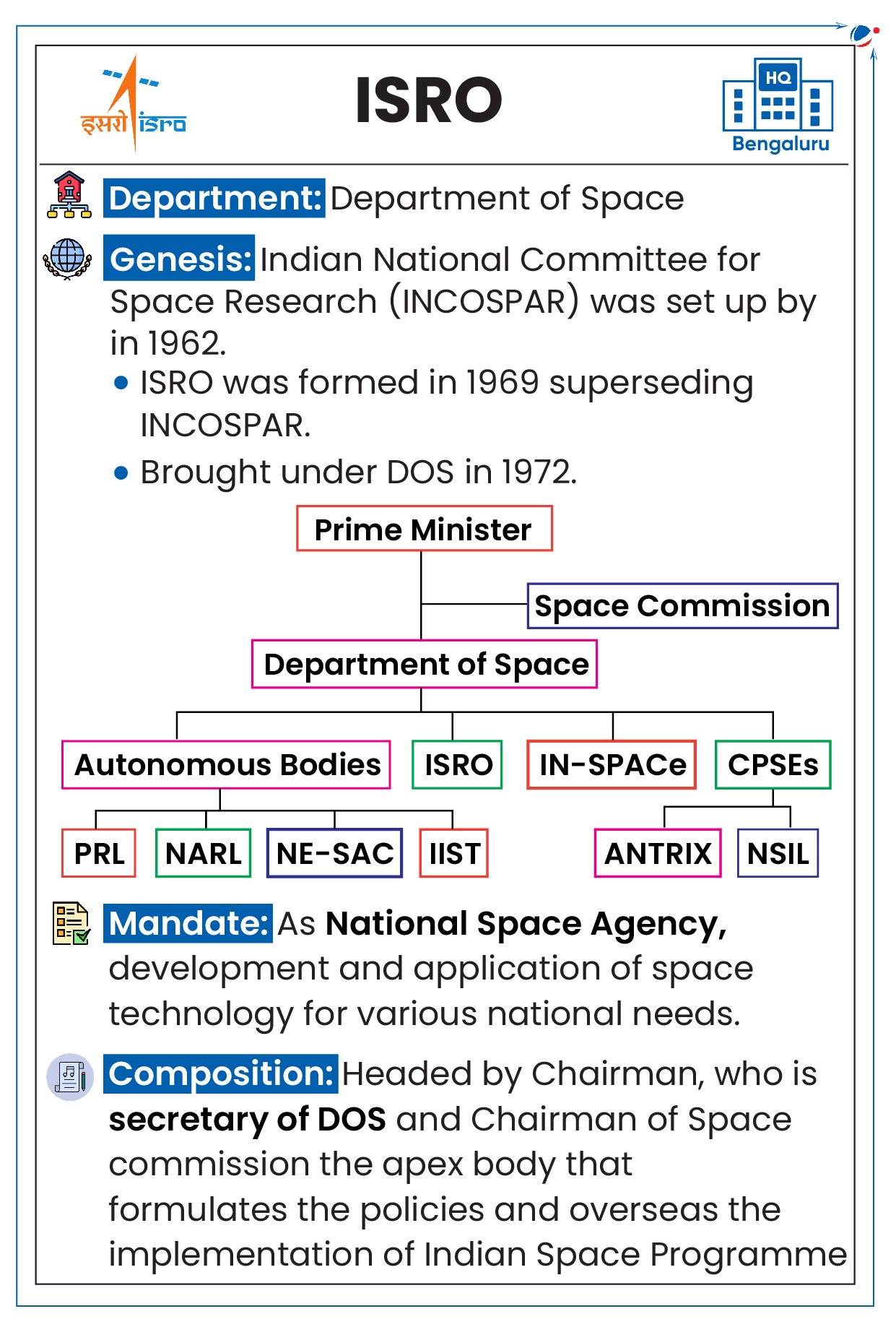Why in the News?
India celebrated its Maiden National Space Day (NSD) on 23rd August, 2024 to commemorate the historic landing of Chandrayaan-3 on the Moon.
About National Space Day
- Chandrayaan-3 mission accomplished safe and soft-landing of Vikram Lander on the lunar surface on August 23, 2023.
- With this, India became the fourth country to land on the moon and first to land near the southern polar region of the moon.
- The soft-landing was followed by successful deployment of Pragyan Rover. The landing site was named as 'Shiv Shakti' point (Statio Shiv Shakti).
- Theme: Touching Lives while Touching the Moon: India's Space Saga.

India's Space Saga
- Aryabhata was India's first satellite, launched in 1975, carried scientific instruments to study the Earth's atmosphere and radiation belts.
- The space agency has executed 123 spacecraft missions and 95 launch missions (as of January 2024).
- International partnerships signify a new chapter of India's prominent role in the global space arena. E.g. Artemis Accord.
- India is the 8th largest space economy (in terms of funding) in the world.
How has ISRO achieved so many achievements despite having less resources?
- Visionary leader: Vikram Sarabhai also Known as the "Father of Indian Space Program'' laid the foundation of ISRO.
- He emphasised on bottom-up approach to larger initiatives.
- Cost Effective Missions: ISRO has made effort to simplify the system, miniature the complex big system, strict quality control and maximise output from a product.
- More than 30% of the sub-systems that went into Chandrayaan-1 were used in other operations.
- Indigenous Technology Development: ISRO has reduced imports and tried to indigenise critical components as much as possible.
- E.g. Polar Satellite Launch Vehicle (PSLV)
- Partnerships and Collaboration: Aryabhata was launched by Soviet Kosmos-3M rocket.
- Recent examples include NASA-ISRO SAR Mission (NISAR), Astronauts of Gaganyaan are being trained in Russia, etc.
- Engaging Private Players: ISRO has promoted engagement of local industry for designing, manufacturing and testing of critical components and systems.
- E.g. Many products of Chandrayaan-3 were supplied by local Industry.
Why is India, being a developing country, investing in space missions?
- National Security through Self-reliance: E.g.,NavIC (Navigation with Indian Constellation), India's regional navigation system.
- It will reduce dependence over US's Global Positioning System (GPS).
- Robust satellite system is helping in monitoring borders, tracking military movements, and gather intelligence.
- Socio-economic Benefits: India has developed its satellite capabilities for mapping and surveying crops and damage from natural disasters and erosion.
- It also used satellite communication to bring telemedicine and telecommunication to remote rural areas.
- Space Diplomacy: E.g., South Asia Satellite Project (See related article).
- Scientific research: Chandrayaan-3 performed experiments using the instruments on Vikram and Pragyaan.
- Revenue Generation: Indian space sector generated $ 60 billion revenue in the last ten years (2014-2023) against an investment of $ 13 billion.
- Multiplier Effect: For every dollar produced by the space sector, there was a multiplier effect of $2.54 to the Indian economy.
Key Future Missions | |
Mission | Detail |
Chandrayaan-4 |
|
Gaganyaan Mission |
|
Venus Orbiter Mission (Shukrayaan) |
|
Mars Orbiter Mission 2 (Mangalyaan 2) |
|
Lunar Polar Exploration Mission |
|
Bharatiya Antariksha Station (2028–2035) |
|
Conclusion
The success of ISRO has set up an example in front other countries as well as well as for different organisations in India that team effort and planning will yield results in positive way. Indian Space Policy-2023 will facilitate further integration of Private sector, paving path for new milestone.
Related NewsSpace Diplomacy
About Space Diplomacy
|




